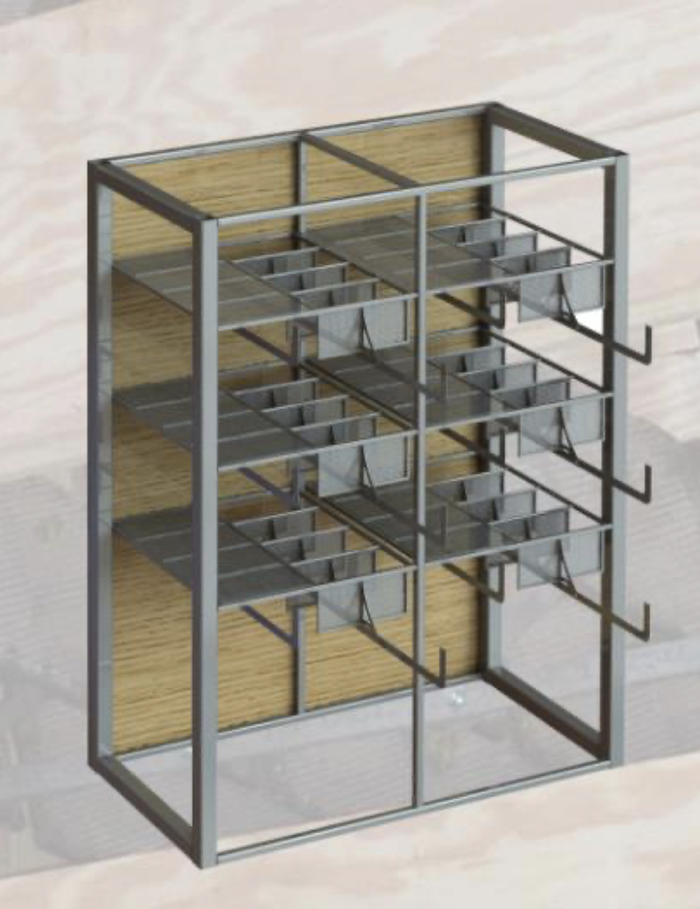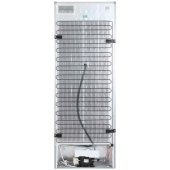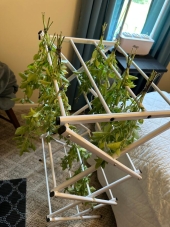
 6
6






 3
3




Nails are sold by the pound, that makes sense.
Soluna Garden Farm -- Flower CSA -- plants, and cut flowers at our farm.
 10
10




"The winter will ask what we did all summer" - Henry David Thoreau
 3
3




"You must be the change you want to see in the world." "First they ignore you, then they laugh at you, then they fight you, then you win." --Mahatma Gandhi
"Preach the Gospel always, and if necessary, use words." --Francis of Assisi.
"Family farms work when the whole family works the farm." -- Adam Klaus
 1
1




Kenneth Elwell wrote:I wonder if the bread racks could be adapted to the plenum method by using the available plastic covers for them and/or trays with sides, and a box fan at the base? Placed in a heat/humidity controlled room? It might be flexible use between either trays or plenum.
I'm reminded also of Alton Brown's "Good Eats" episode about dying herbs, where he used furnace filters as trays and one more as a lid, strapped to a box fan with bungees. Halfway through, he flipped the filter stack over and blew air through the other direction.
 3
3




I wrote:
Cheryl Loomans wrote:I grew hops last year for the first and while researching how best to handle and dry them I came across this video. The filter style that Kenneth mentions is at about 13 min mark and the style that may help you is at about 19 min. At least this is what your description sounds like to me... Hope this helps!
Neat overview. The closest thing to what I'm going for the large- and semi-large scale commercial systems. His box system is similar in some regards, but it doesn't achieve positive pressure due to the reversed air flow. But it does give me some materials ideas. Thanks!

 1
1




R Scott wrote:So, that sounds like a grain drying bin from any big ag farm. The heat is to reduce the relative humidity on a LARGE scale. On your scale, I think a dehumidifier is still a better option.
I have a friend that dabbled in selling seeds. He built one for seeds, it was a room with a plywood plenum fed with an old furnace fan. The top of the plenum had holes to set bins of seeds in. I think they were grey busboy totes with holes drilled in the bottom and lined with muslin. Then he had a couple dehumidifiers and a window ac to dry the room as the air circulated through the seeds.
 2
2




 2
2




I wrote:

I checked out https://hopsharvester.com/hops-drying-floors, referenced in the video, and requested some info from them.
I'm curious about the function and manipulation of the gates. Might not be operable for herby materials.
I do know from the Carpenters' book that their box requires raking to stir/mix contents and achieve even dehydration. My guess is that the yellow gates achieve this function with hops in the hopsharvester system, but that it is limited to hops and similar, and might not work with leafy stuff.

 2
2








Nails are sold by the pound, that makes sense.
Soluna Garden Farm -- Flower CSA -- plants, and cut flowers at our farm.

|
Watchya got in that poodle gun? Anything for me? Or this tiny ad?
Learn Permaculture through a little hard work
https://wheaton-labs.com/bootcamp
|






